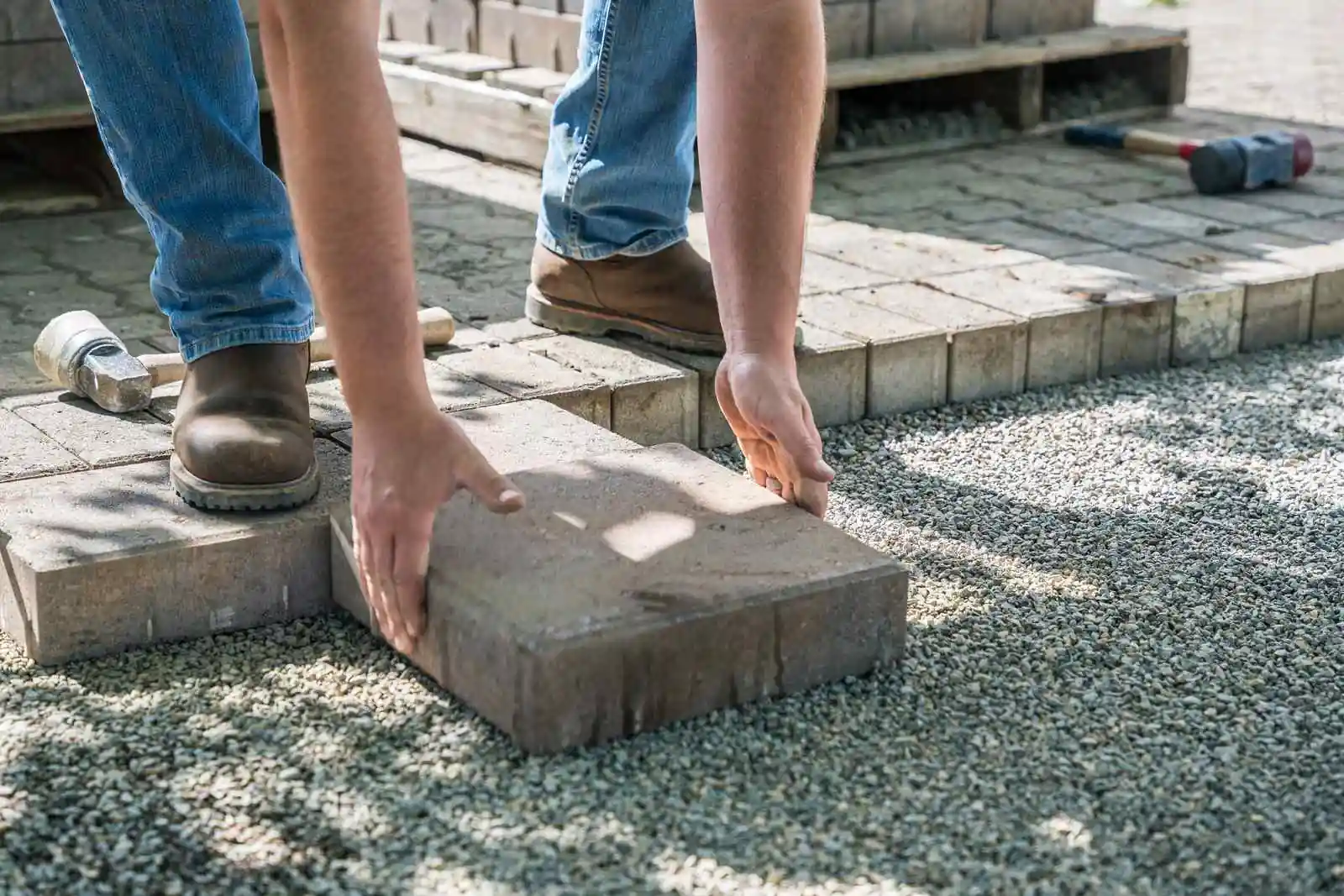Growing demand for durable pavements drives the need to understand the complex factors that govern paver degradation. Traditional testing methods are time-consuming and limited. Computer simulations create virtual replicas of real-world scenarios, examining intricate interactions that affect paver performance. This helps researchers uncover new insights into the mechanisms of understanding paver durability. However, the question remains: what specific benefits do simulations bring to the table, and how can they inform the development of more resilient pavements?
Researchers use simulations to model various scenarios and variables, gaining a deeper understanding of paver degradation. Simulations also enable them to test different materials and designs, predicting how they will perform in real-world conditions. By leveraging simulation technology, researchers can identify key factors that affect paver durability.
Key Takeaways
- Computer simulations can replicate real-world scenarios in a controlled virtual environment, allowing researchers to isolate and examine specific variables that impact paver performance.
- Simulations enable the rapid iteration and testing of different scenarios, exploring a wide range of “what-if” scenarios to identify key factors influencing paver degradation.
- Simulation insights can predict the future performance of pavement systems, enabling engineers to take proactive measures to prevent failures and reduce lifecycle costs.
- Computer simulations can facilitate the development of novel paver designs and materials optimized for specific applications, reducing the need for physical prototyping.
- Simulations can provide valuable insights into paver behavior and failure mechanisms, ultimately leading to the establishment of new standards for paver performance.
The Importance of Paver Durability
In outdoor spaces, pavers serve as the foundation of pedestrian and vehicular traffic, making paver durability a critical aspect of infrastructure planning and maintenance. The importance of paver durability cannot be overstated, as it directly impacts the safety and longevity of infrastructure. Pavers that fail to withstand environmental and traffic-related stresses can lead to costly repairs, accidents, and even fatalities.
Understanding paver durability is essential for superior infrastructure design and maintenance. Durable pavers can withstand various environmental conditions, such as freeze-thaw cycles, extreme temperatures, and weathering. They can also resist traffic-related stresses, including vehicular loading and pedestrian wear. By specifying durable pavers, infrastructure planners can reduce maintenance costs, minimize downtime, and guarantee public safety.
Furthermore, durable pavers can enhance the aesthetic appeal of outdoor spaces, adding value to properties and contributing to community pride. By prioritizing paver durability, infrastructure planners can create sustainable, resilient, and visually appealing outdoor spaces that support the well-being of users.
Current Challenges in Durability Testing
Durability testing of pavers is a complex process that faces numerous challenges, primarily due to the multifaceted nature of paver degradation. The testing process involves evaluating pavers’ resistance to various environmental and mechanical stresses, such as freeze-thaw cycles, traffic loads, and chemical attacks. However, replicating these conditions in a laboratory setting is difficult, and the results may not accurately reflect real-world scenarios.
Additionally, durability testing is often time-consuming and resource-intensive, requiring significant investments of money, personnel, and equipment. In addition, the testing process can be destructive, resulting in the loss of paver samples and valuable data. Also, the variability in paver materials, manufacturing processes, and installation conditions can lead to inconsistent test results, making it challenging to draw general conclusions about paver durability. These challenges hinder our understanding of paver durability, highlighting the need for alternative approaches that can provide more accurate and reliable results. By addressing these challenges, we can improve our understanding of paver durability and develop more effective testing methods.
How Simulations Enhance Durability Analysis
Computer simulations offer a promising solution to the challenges inherent in traditional durability testing, providing a powerful tool to enhance our understanding of paver durability. By replicating real-world scenarios in a controlled virtual environment, simulations enable researchers to isolate and examine specific variables that impact paver performance, thereby facilitating a more nuanced analysis of durability. This capability allows for the identification of key factors that influence paver degradation, such as environmental conditions, material properties, and structural design. In addition, simulations enable the rapid iteration and testing of different scenarios, allowing researchers to explore a wide range of “what-if” scenarios and predict how pavers will respond under various conditions. This level of precision and control is unattainable through traditional testing methods, which are often limited by time, resources, and logistical constraints. By leveraging simulations, researchers can gain a deeper understanding of the complex interactions that govern paver durability, ultimately informing the development of more resilient and sustainable pavement systems.

Real-World Applications of Simulation Insights
Optimization of paver design and pavement systems is a critical step in ensuring the long-term performance and sustainability of infrastructure projects. Computer simulations play a crucial role in this process by providing valuable insights into understanding paver durability. These insights can be applied in various real-world scenarios to improve the overall performance of pavement systems.
- Infrastructure Planning: Simulation insights can be used to identify potential failure points in pavement systems, enabling infrastructure planners to develop more effective maintenance strategies and reduce lifecycle costs.
- Material Selection: By simulating the behavior of different paver materials under various environmental conditions, engineers can select the most suitable materials for specific projects, ensuring peak performance and durability.
- Paver Design Optimization: Computer simulations can be used to optimize paver design parameters, such as thickness and texture, to minimize wear and tear and extend the lifespan of pavement systems.
- Performance Prediction: Simulation models can predict the future performance of pavement systems, allowing engineers to take proactive measures to prevent failures and reduce maintenance costs.
Unlocking New Standards for Paver Performance
As the pursuit of excellence in paver performance continues to drive innovation, researchers are leveraging computer simulations to reveal new standards for paver durability. By virtually testing pavers under various environmental and loading conditions, simulations can provide valuable insights into their behavior and failure mechanisms. This information can be used to develop more accurate and reliable testing protocols, ultimately leading to the establishment of new standards for paver performance.
Computer simulations can also facilitate the development of novel paver designs and materials that are optimized for specific applications. By simulating the performance of different paver configurations and materials, researchers can identify the most promising solutions and accelerate their development. Additionally, simulations can help reduce the need for physical prototyping, which can be time-consuming and costly. By opening up new standards for paver performance, computer simulations can play a critical role in enhancing our understanding of paver durability and driving innovation in the field.
Frequently Asked Questions
Can Simulation Models Account for Varying Environmental Conditions?
Simulation models can indeed account for varying environmental conditions, such as temperature, humidity, and precipitation, by incorporating probabilistic distributions and sensitivity analyses to guarantee a thorough understanding of paver durability under diverse climate scenarios.
How Do Simulation Results Translate to Real-World Paver Performance?
Simulation results are validated through rigorous calibration and verification processes, ensuring accurate predictions of paver performance under diverse conditions, thereby facilitating the translation of simulation outcomes to reliable, real-world paver durability assessments.
Are Simulation Insights Scalable to Large-Scale Infrastructure Projects?
Scalability of simulation insights to large-scale infrastructure projects is vital, as it enables the extrapolation of findings to real-world scenarios, allowing for more accurate predictions of paver durability and informing data-driven decisions in complex infrastructure development.
Can Simulations Identify Potential Defects in Paver Materials?
Through advanced material modeling and structural analysis, computer simulations can effectively identify potential defects in paver materials, such as cracks, porosity, and wear patterns, enabling proactive quality control and optimized material selection for enhanced durability.
Do Simulation Models Require Specialized Technical Expertise?
Simulation models necessitate specialized technical expertise to accurately calibrate and interpret results, requiring proficiency in materials science, numerical methods, and software operation to guarantee reliable predictions of paver durability and defect identification.
Conclusion
Computer simulations substantially enhance understanding of paver durability by replicating real-world scenarios in a controlled virtual environment. This allows isolation and examination of specific variables impacting paver performance, identifying key factors influencing degradation. Simulation-driven insights have the potential to inform new standards for paver performance, improving durability and reducing maintenance costs. By leveraging simulations, the industry can develop more resilient and sustainable paver systems, ultimately benefiting infrastructure development and maintenance.
You May Also Like To Read:





